author: Gregory Bobrek
Pillars of Eternity: The White March – Part 1 Review
Pillars of Eternity is one of the best RPG games of the last few years, reaching out to the roots of the genre in an amazing way. The first of the expansions planned for this title leaves no doubt that Obsidian is at their best.
The review is based on the PC version.
- over a dozen of well thought-over gameplay;
- intriguing main plot;
- locations filled with quests, mysteries and treasures;
- expansion of the concept of "gamebook" fragments;
- a lot of content for the most skilled teams.
- no clarity as to the form of the expansion - what will White March - Part 2 bring?
A week has only passed since the release of The Descent, a DLC for Dragon Age: Inquisition, and we go back to exploring the ancient ruins of this well grounded race - the dwarves. However, in contrast to The Descent, now we actually get an expansion with a capital E - the first part of The White March for Pillars of Eternity is an almost perfect expansion. Not only does it introduce new quests and challenges for high-level teams, but it also expands the original game with new elements and mechanics.
We get the access to the content of the expansion as soon as in the second act of the main storyline. Thanks to this, right after we get to take over the Caed Nua, we can head to the White March, a mountain range below which a group of desperate people decided to set up a settlement called Stalwart. Unfortunately, the village's greatness is long gone - economically it can barely get by, young people leave to explore the vast world, looking for better opportunities (sounds familiar?), and groups of ogres really start to push it and they keep harassing the villagers in more or less elaborate ways. As a last resort, the settlers decide to grasp at straws and they start tempting the adventurers with a prize for reopening Durgan's Battery, an ancient dwarven fortress known for its top quality smelted steel. The problem is that the entrance to the fortress has been closed shut for the last 200 years, and the mystery of how the citizens of the stronghold ceased to exist has not yet been resolved. The main story of the expansions does not touch on the subjects as ambitious as in the original game, but there is a certain charm to it. This is a typical example of a RPG-like story - we have a ruined settlement with its dozens of smaller or larger troubles, and over a superficial layer of the idyllic atmosphere there is a lot of bad blood and unresolved conflicts. This way of telling the story will never get old, especially when it is delivered in such a concrete and thought-over form as in this expansion.
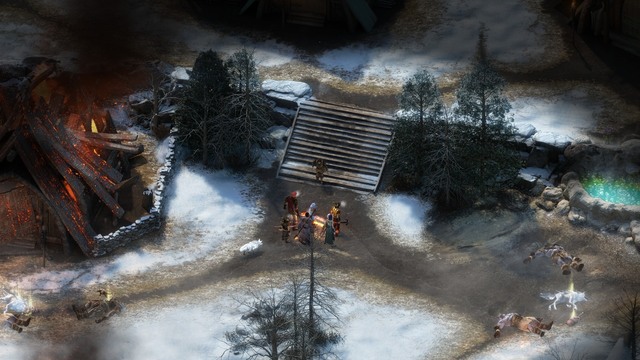
The first part of The White March has been structured in a very clever way. There is a lot of dungeon crawling - a dwarven stronghold has to deliver, doesn't it? - but we won't miss out on walking under the sky either. We get 3 new locations (and a village), but the wild areas are bigger than the ones in the basic game and they are more densely filled with activities. There are no redundant quests here, they all serve as a way of presenting the story of the region and the characteristic of its residents, and they are written so well that you want to complete each and every one of them even out of curiosity. The writers did hell of a job not only with designing the main storyline, but also with all the small meetings and mini-quests. Nothing has changed since the original game - under layers of lines, you can find a brilliantly created world with a number of very distinct characters.
Speaking of the writing - I really liked the decision they made with expanding on the sections of the game that resemble gamebooks. The ones offered in The White March are definitely more complicated than the ones in the original game, and they appear more often. I tested one of such events with few characters and I was pleasantly surprised by the number of options and alternative solutions. For example, a strong character could remove a burning log blocking the way with sheer force, while the wizard could use one of his ice spells to deal with the problem. What is also worth noting is that there are certain alternative decisions we can make within the main storyline of the expansion. Before the release of The White March, the creators highlighted that no decision made in the first part will influence the events of the second one, but that would be a silly oversight. Many of the situations present in the game demand unexpected consequences. I hope that Obsidian can back out of their initial plans and build up on the potential of the decisions you make within the main storyline and the side quests.
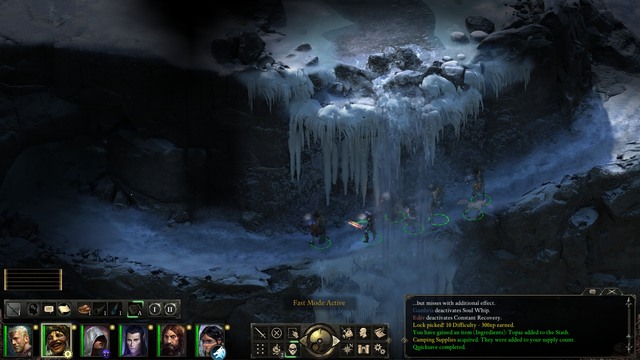
Many parties will come back right where they came from as soon as they come to this blizzard-plagued land. The White March offers challenges that only well-trained teams can take on. On Hard, my group of adventurers on the 8th experience level got their butts delivered to them on a regular basis, as the areas are full of difficulties. Not only did the creators prepare few new types of monsters, but they also made sure that the White March is traversed by groups of extremely dangerous packs of mercenaries and religious fanatics. Oh, and there is a dragon in one of the caves. I still didn't come up with a way of dealing with that bastard...
Obsidian definitely got lost when they decided to divide the expansion into two parts. Since the developers don't want to discourage the potential buyers who could accuse them of artificially cutting the expansion in two, we learned at this year's gamescom that they made a pretty unusual decision of not tying the expansions' stories too tightly. According to the plan, the player could buy only the second part of The White March and he would lose nothing of the adventure. Admit it, this sounds absurd. By the time the second part of the expansion comes out, every fan of Pillars of Eternity will have his adventures in Stalwart completed a long time ago... Besides, the ending of The White March - Part 1 points to something completely different. Moreover, they could call the expansions in a different manner... go figure!
It seems that there was a miscommunication on our part during the gamescom presentation. As one of the developers clarified in the comments below the article, both expansions were never planned as separate stories. However, people who would buy White March – Part 1 should be granted a sense of closure for completing the first expansion, after which they would be free, but not forced to buy the second part.We are sorry to have caused a misunderstanding.
The White March does not leave us completely unprepared for the new troubles. First of all, we can get 2 more experience levels, which totals up to 14. Second of all, in remote locations of the White March we can find a new type of powerful relics, the full potential of which we can only unlock after "assigning" the item to a specific character, and then fulfilling all the requirements that have to be met. Finally, we have 2 new companions - a monk and a rogue. Equally important are the improvements that a patch 2.0 brought to the mechanics of not only the expansion, but also to the original game.
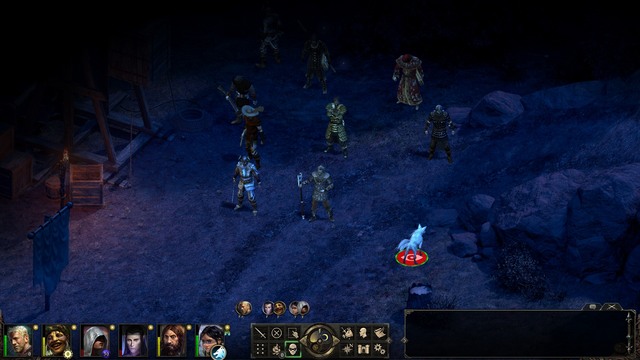
On the one hand, the AI of the enemies have been significantly improved, which usually means trouble for the party's monk or wizard. The enemies more often target the support characters and they cannot be easily diverted by a melee fight. Thus the more significant role of all the skills that slow the enemies down, immbolize them, or summon the creatures that can hopefully engage the opponents in a close combat. On the other hand, stealth finally works as it should. From now on, every character hides "on their own" - spotting of a clumsy paladin does not mean that an agile rogue will also leave its cover of darkness. This solution works as a great convenience for the player - you can gradually "start up" packs of enemies (works best with the rogue's animal companion), and then separate them into smaller groups that are easier to defeat.
If that's not enough for you, Dyrwood itself got a new location as well. Cragholdt Bluffs is a side quest in which we stand against a well-prepared band of mercenaries. Here every skirmish requires a perfect micromanagement and proves to be a challenge even for the most buffed parties.
This leads us to a conclusion that The White March not only gives you more of "the same", but it is also an improvement in quality - the content of the expansion is top notch, it offers a completely different feeling than the dramatic chase from the original game, and new monsters and quests will challenge even the veterans of the game. Pillars of Eternity itself was a brilliant title, but the expansion raises the bar even higher.
I must admit that the first part of The White March exceeded my expectations, even though I expected quite a lot from an expansion to my favorite RPG of the last few years. The White March obviously won't convince those who weren't too keen on Pillars of Eternity, but for the fans of the original game a trip to a snow-covered land is a trip that they must make.
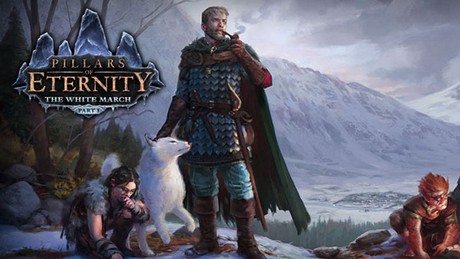
Pillars of Eternity: The White March – Part 1 Review
game review
Pillars of Eternity is one of the best RPG games of the last few years, reaching out to the roots of the genre in an amazing way. The first of the expansions planned for this title leaves no doubt that Obsidian is at their best.
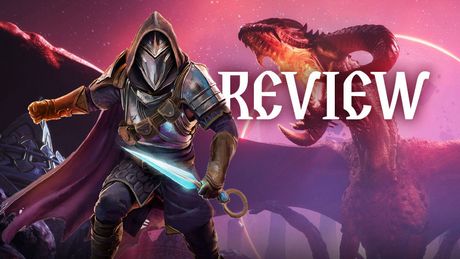
Dragon Age: The Veilguard Review: A New Entry That Could Bring More to the Table
game review
Dragon Age: The Veil Guard follows a path that moves away from the fans of the first installment of the series. It has added more simplifications, and the game world has been completely stripped of its former, dark character.

Visions of Mana Review: A Sacrifice for Nostalgia
game review
17 years after the release of the last Mana series game, Visions of Mana hopes to breathe new life into the series. Does it have what it takes to restore the balance of story and combat?
